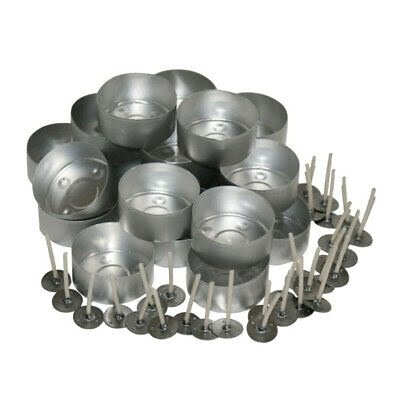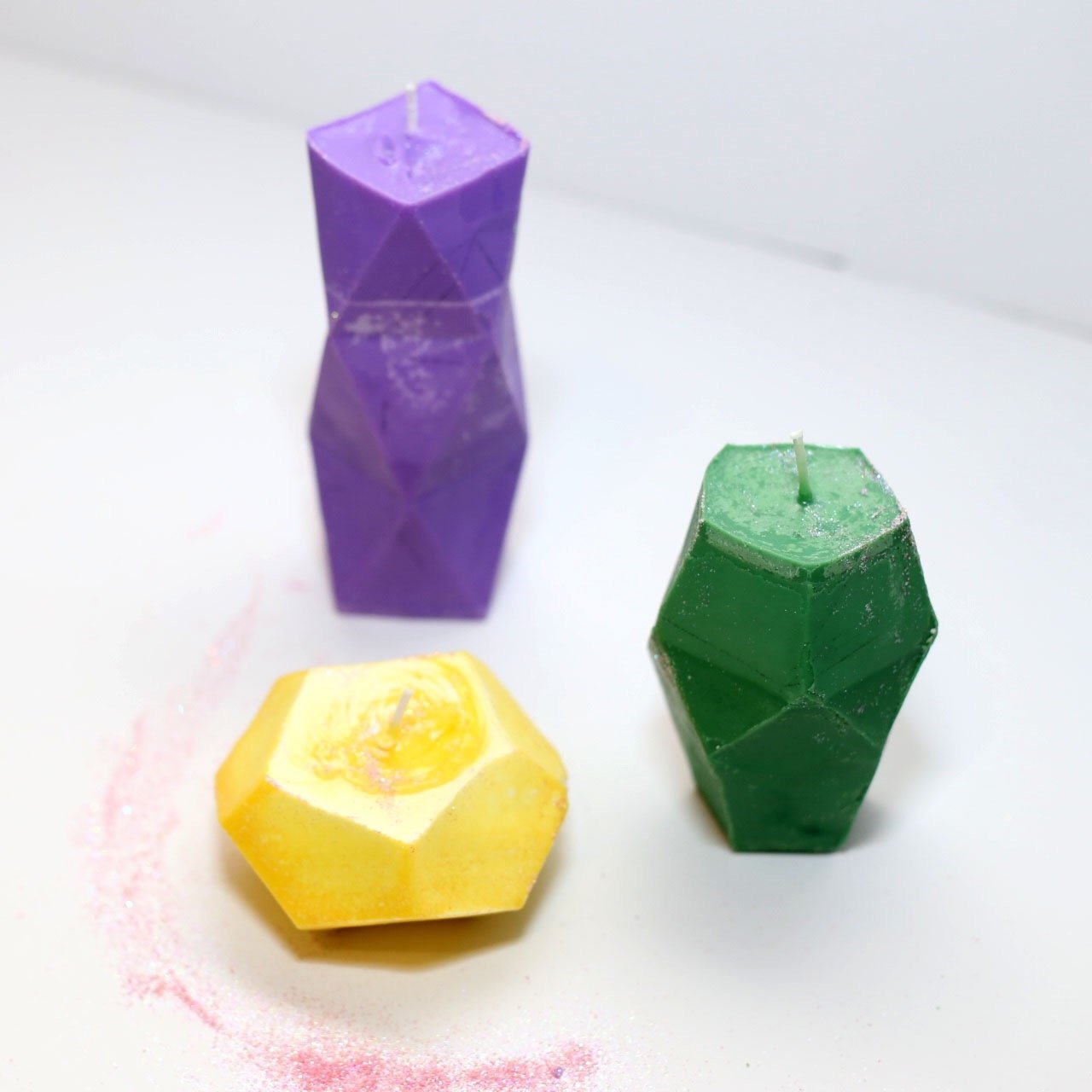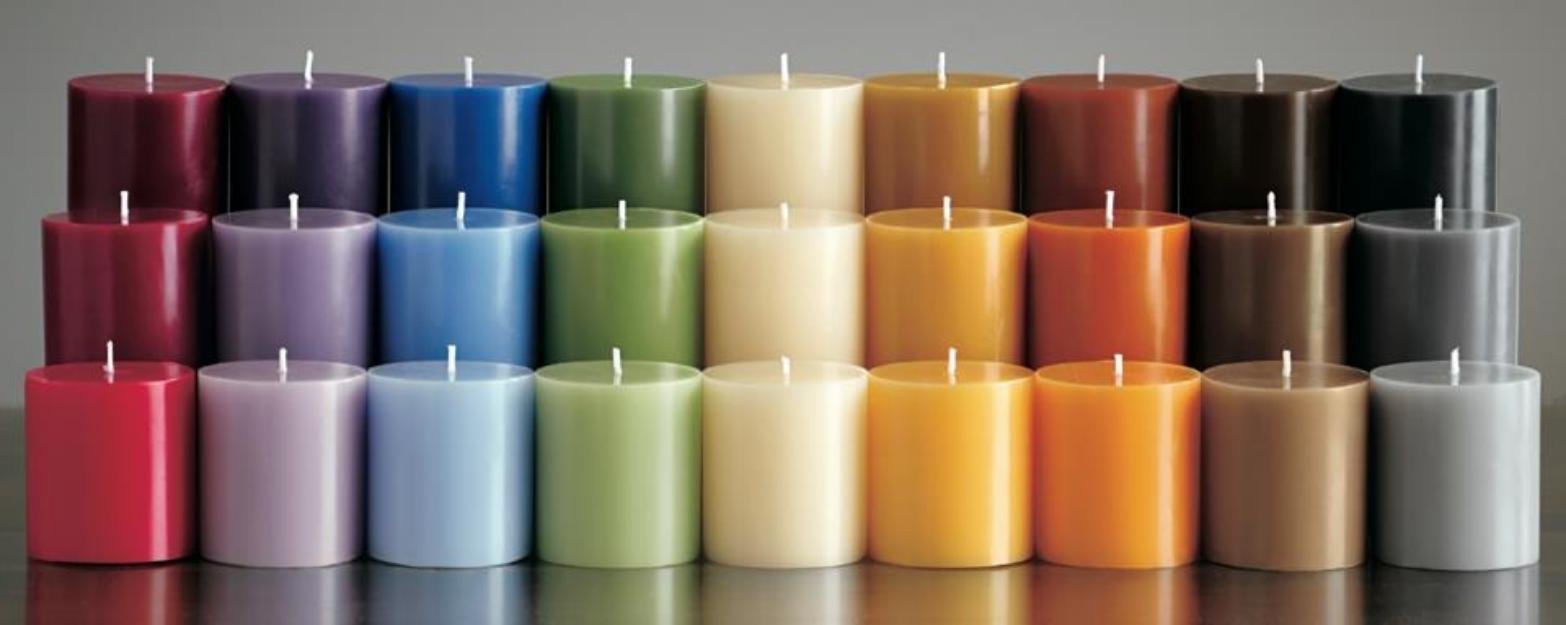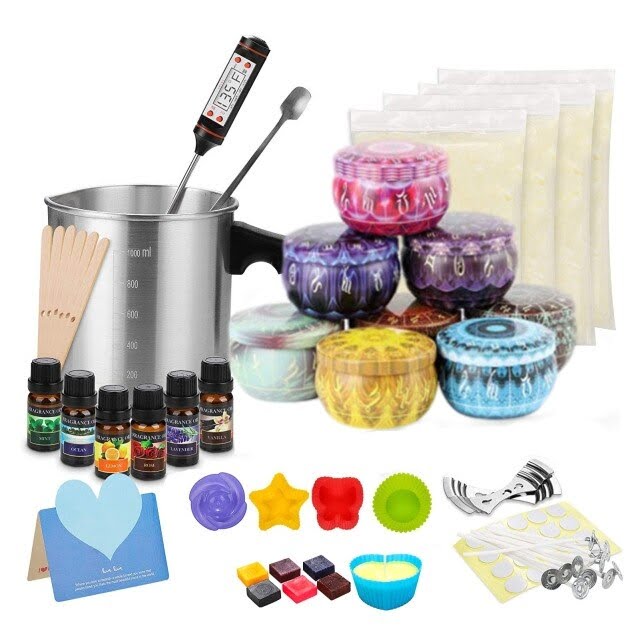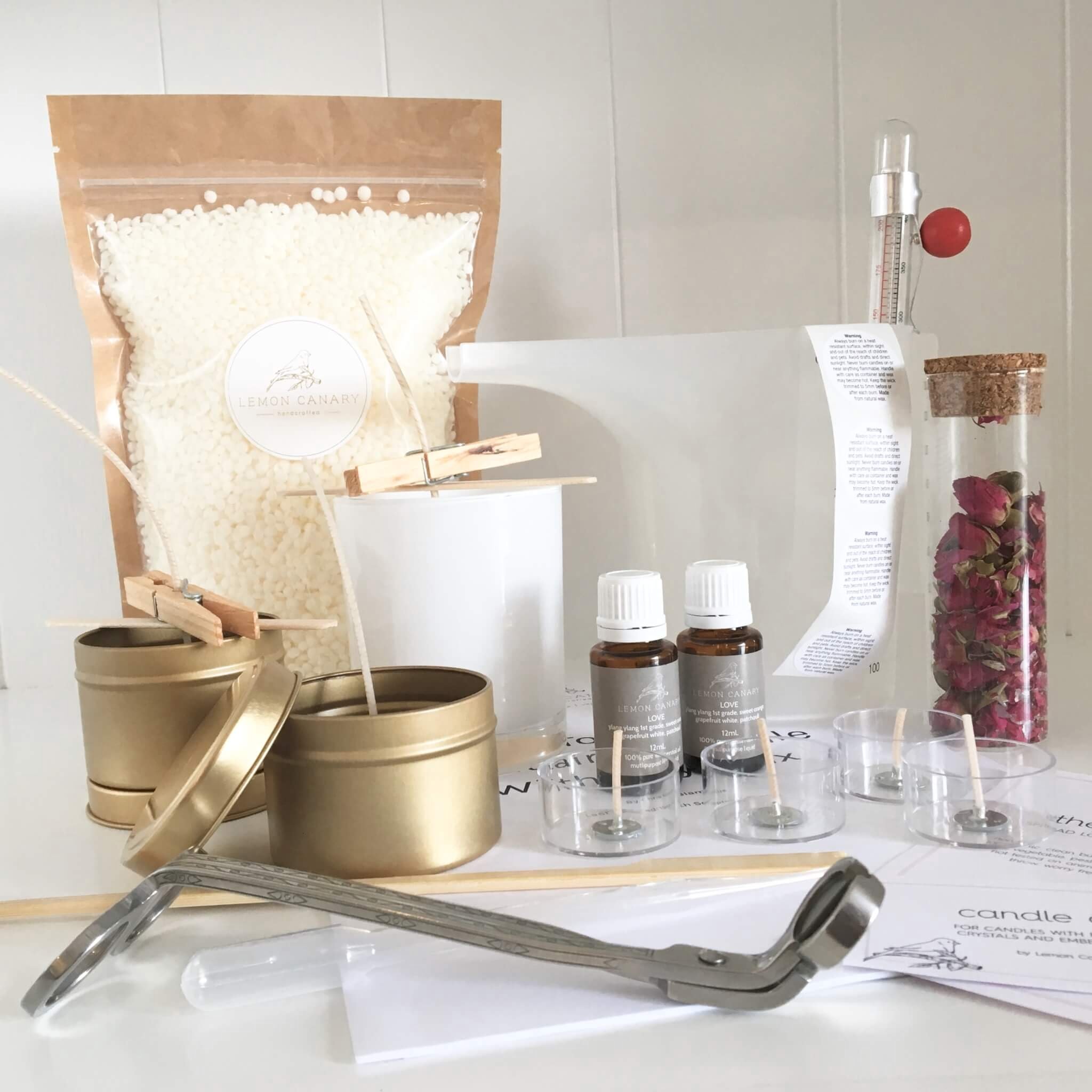Introduction to Soy Wax Candle Making
Definition: Soy wax candle making is the process of melting, pouring and shaping soy wax to create candles. This type of wax is made from hydrogenated soybean oil, offering an all-natural alternative to traditional petroleum-based waxes.
History: The history of soy wax can be traced back to the early 1990s when it was first discovered as a viable source for candle making. It quickly became popular due to its natural properties and its lower melting point than other types of wax. However, in more recent years, it has grown in popularity as a healthier option for candle makers and those seeking naturally sourced candles.
Benefits: The primary benefit of using soy wax for candles is environmental sustainability. Since it’s derived from plants, burning the candles creates less pollution than burning petroleum based paraffin-based candles which makes them an ecofriendly option. Other benefits include a slower burn than other types of wax, enhanced scent retention and cooler burning temperatures making them safer compared to paraffin-based candles that can burn hot enough to cause fires.
Common Misconceptions: A common misconception with soy wax is that all soy wax is created equal; however there are different grades of soy wax; some being better suited for certain applications than others.(eg botanically based) Additionally, despite the fact that they are made from natural materials they still may release toxins into your home if not properly maintained or burned in poorly ventilated spaces. Finally, it’s important to note that even though they are often advertised as being longer lasting than other types of candles this largely depends on the quality ingredients used to make them – so be sure to purchase high quality products if you’re looking for longevity in your creations!
Essential Supplies Needed for Soy Wax Candle Making
Soy wax candle making requires a few essential supplies to ensure success. Before diving into the craft, it is important for you to have the following: soy wax, wick and tab, double boiler or melting pot, thermometer (or candy thermometer), dye chips if desired, fragrance oil, containers, and an oven mitt.
The soy wax should be purchased from a trusted source that specializes in candle making supplies. The thickness of the wax may vary depending on the supplier, so choose accordingly. Wick and tab sets should also be used when making candles as it helps keep them straight while burning and prevents them from tipping over in your container. A double boiler or melting pot are important as this is what will gently heat the wax when creating your candles; make sure it has temperature control features to maintain an even temperature throughout your candle making process. A thermometer or candy thermometer will help you keep an eye on your melting temperatures as wax can scorch easily if heated too high. Dye chips can be added if desired and will give you the opportunity to create custom colors for each candle. Fragrance oil should also be added according to package instructions for best results; many specialty stores carry unique scents for home use that can give a luxurious feel when lit. Finally, always wear an oven mitt or hot protection gloves when handling hot wax around the container as it can cause serious burns if touched directly or splashed on unprotected parts of your skin.
Prepping the Soy Wax for Candle Making
When prepping soy wax for candle making, it is important to be aware of the melting point of the wax. The melting point of soy wax is between 120-125 degrees Fahrenheit and should not exceed 165 degrees Fahrenheit or else it could degrade. Furthermore, it is important to heat the wax gently and slowly with a double boiler system until it melts completely without burning any of the particles in order to maintain its quality. To avoid clumps in the melted wax, use a thermometer to monitor temperature levels, a whisk for smooth stirring, and low heat until all particles have dissolved evenly. Last but not least, when adding fragrances or coloring agents to the wax, be sure that these additional ingredients match the recommended usage amounts specified by their respective manufacturers as too much can permanently damage your finished product.
Melting & Pouring the Soy Wax Safely
Before you start candle making, it is important to remember safety first. When it comes to melting and pouring the soy wax, good ventilation is key! To avoid potentially toxic fumes, it is recommended that you do all your soy wax melting and pouring outdoors or in a well-ventilated area. Make sure to never melt the wax over direct heat (e.g. a naked flame) as this can cause dangerous fires. It is much safer to use an electric double boiler, otherwise known as a hot plate or melting pot. This will provide even heat and circulation allowing the wax to melt slowly and evenly.
When it comes time to pour the melted soy wax into your containers, make sure all candles are fully insulated with fireproof gloves or mitts and never put hot melted wax on any type of cloth surface or tablecloth as this may result in an uncontrollable fire situation! Additionally, always allow freshly poured soy candles at least one full hour before touching them – this allows the wax enough time to cool and harden which helps prevent any accidental burns from occurring when handling the candles once cooled. Finally, when finished be sure to correctly dispose of any leftover and melted wax properly in an approved receptacle so that there are no slipping hazards when dealing with a gallon size container of hot liquid..
Types of Wicks & How to Choose the Right Wick for Soy Wax Candles
When making candles with soy wax, it is important to choose the correct wick size for your candles. The right wick size can make a huge difference in how your candle burns and the quality of the flame. To determine which wick size you should use for your particular type of soy wax, there are a few factors to consider. Firstly, consider what type of container or mould you will be using. Different wicks fit different containers better than others. For example, if you are creating a small votive or tea light then you would need a smaller wick such as a CD1 or CD2 size. Secondly, the thickness and viscosity of the wax also affect what kind of wick should be used. Generally, the thicker the wax, the larger diameter and length of wick should be used for better adhesion and burning properties. Lastly, consider how much scent and/or dye has been added to your soy wax; usually a bigger diameter or length candle may require additional fragrance oil or dyes than normal due to its larger well capacity.
Once you have determined which type and size of wick is appropriate for your container and blend, there are other practical steps you can take when setting up your candles before burning them in order to ensure proper burning performance: always pre-trim your wick prior to lighting; prime each fresh switch with melted wax to secure it into place; designate an area with no drafts so that flames stay illuminated more smoothly; avoid rapid movement after lighting to allow the fragrances and dyes time to fully melt; avoid overfilling containers past the maximum fill line so that wax will not pool or rise too far around the edge; extinguish candles when they reach 1/2 inch before they hit bottom of container or become interrupted by debris (such as pet fur).
Tips for Prolonging the Life of Your Soy Wax Candle
1. Always trim the wick before each use to about 1/4 of an inch. This will help your candle burn efficiently and reduce the risk of sooting.
2. Be sure to burn your candle for at least one hour at a time to ensure an even melt pool, leaving no wax left on the sides of your container or jar.
3. Store your soy candles in a cool, dry place away from any direct sunlight or heat sources as this can cause them to soften and deform in shape over time.
4. Avoid burning soy candles continuously for more than 4 hours at any given time, as doing so can create excess heat that may damage the container or jar you’re using to hold your candle’s flame.
5. When finished with a session of burning, always snuff out the wick instead of blowing it out so as not to possibly spread potential contaminants such as smoke or even bits of charred wick into the air and onto nearby surfaces in your home.
6. If you notice black soot around the edge of the container or jars due to improper burning practices, quickly wipe off all excess soot with a damp cloth before relighting again for future use!
How to Add Fragrances & Colors to Soy Wax Candles
Adding fragrances and colors to soy wax candles is a great way to make them unique. To do this, you must first select the type of fragrance and color you would like to add. Fragrance oils are readily available in many craft stores, while colored dyes can be purchased as specifically designed for candle making.
Once you have chosen the fragrance and color, you will need to determine how much scent and dye to add. For use in soy wax, typically a half-ounce of oil should be added per pound of wax. If adding colors, use either liquid or powder forms and no more than 1 teaspoon per pound of wax should be used. Once ready, always add the scent and colors directly into the melted wax mix prior to pouring it into the molds or containers.
For best results when using scents and colors with soy wax, use very low wattage or double boiler processes for melting because any incorrect heat application can lead to poor scent throw or discoloring issues for your finished product. Additionally, make sure all equipment used has been properly cleaned before use – leftover residue from previous batches can not only affect how your candle looks but also how long it will burn for once completed. As always test a small pour before assembling a large batch of candles using the same measurements!
Finishing Touches for Soy Wax Candle Making
Soy wax candles look just as beautiful as their traditional paraffin wax counterparts, so you’ll want your final product to really stand-out. To do this, there are several different finishing touches that you can add to your candles for a more professional and decorative outcome.
• Before doing any other work on the candle, make sure that it has been cooled completely and allowed to harden.
• Choose brightly colored dyes or pigments of your desired color to get a rich hue. Many soy candle kits come with these pre-mixed colors, but they may need adjusting to match the exact shade you’re going for. Keep in mind that too much dye can overpower the scent of the candle, so test before adding a great deal of color.
• Add texture and patterns by making use of different materials such as decoupage paper or tissue paper in various colors and shapes. Try using stencils and brushes to create interesting designs, then glue them into place with meltable craft glue or heated acrylic sealant like Mod Podge.
• Start attaching embellishments like glitter or chopped herbs when the glue has dried by sprinkling them on top of the design (for larger accents). Or, choose wicks with crafted features – beaded tops make great additions for a little extra sparkle!
• Presentation is key; choose a glass container or jar specifically designed for candles with beauty in mind. Once inside, consider including stickers alongside the lid or even wrapping ribbon around it if your gift recipient will appreciate added flare! Lastly ” don’t forget delicate labels detailing fragrance names and producers!
Common Problems & Mistakes Made with Soy Wax Candle Making
One of the most common mistakes made when making candles is not mixing the scent thoroughly with the wax. This can cause your candles to have a scent that only comes out when they are burning, and is why high- quality scents like essential oils work better. Additionally, it’s important to understand the melting temperature of your wax and adjust accordingly. For instance, if you’re using low-melt soy wax it will be much easier to scoop into molds than with beeswax or medium-melt soy wax.
It’s also important to use an appropriate wick size for your project. If you don’t use one big enough, your flame won’t be large enough to burn away all of the melted wax around it and tunneling (a deep hole in the center) may occur. On the flip side, if you use too large a wick it will create excess soot which can give off a strong smell as well as spoiled appearance. Lastly, do not overfill your container with Wax! Although you want enough Wax in there for even coverage”you need space for flame to burn properly”fumes from having too much Wax can be hazardous! When filling our molds with more than one pound of wax make sure to leave at least 1 inch of headspace from the top lip of container all around”so flame has plenty of oxygen!
Summary & Final Thoughts on Soy Wax Candle Making Tips
Making soy wax candles is a great way to create beautiful and aromatic candle creations. Though there are certain guidelines you must follow when working with wax, it is still relatively easy for anyone, regardless of skill level, to make soy wax candles.
First and foremost, always make sure to wear protective clothing and eye protection when dealing with hot wax. In addition, use a double boiler or melting pot specifically designed for wax melting on a flat surface away from any flammable materials. Furthermore, avoid the use of metal containers or utensils while working with wax as they can cause sparks which can turn your work area into a dangerous place.
When it comes to wicks be sure to do your research as different types of wick are needed for different types of waxes such as soy or paraffin. Additionally, consider using additives like stearic acid and vybar in order to achieve desired characteristics such as scent throw strength and burn rate. If you plan on mixing dyes with your wax remember that a little goes a long way! Lastly, allow your finished product enough time to cure before selling or gifting; storing them in a cool dark place while curing is ideal!
In summary, taking the proper precautions while handling heated wax and selecting the right type and quantity of wick and additives will lead to successful soy-wax candle making experiences you can be proud of! Furthermore, never forget let the candles cure completely before gifting them away so that they reach their full potential!

Welcome to my candle making blog! In this blog, I will be sharing my tips and tricks for making candles. I will also be sharing some of my favorite recipes.

